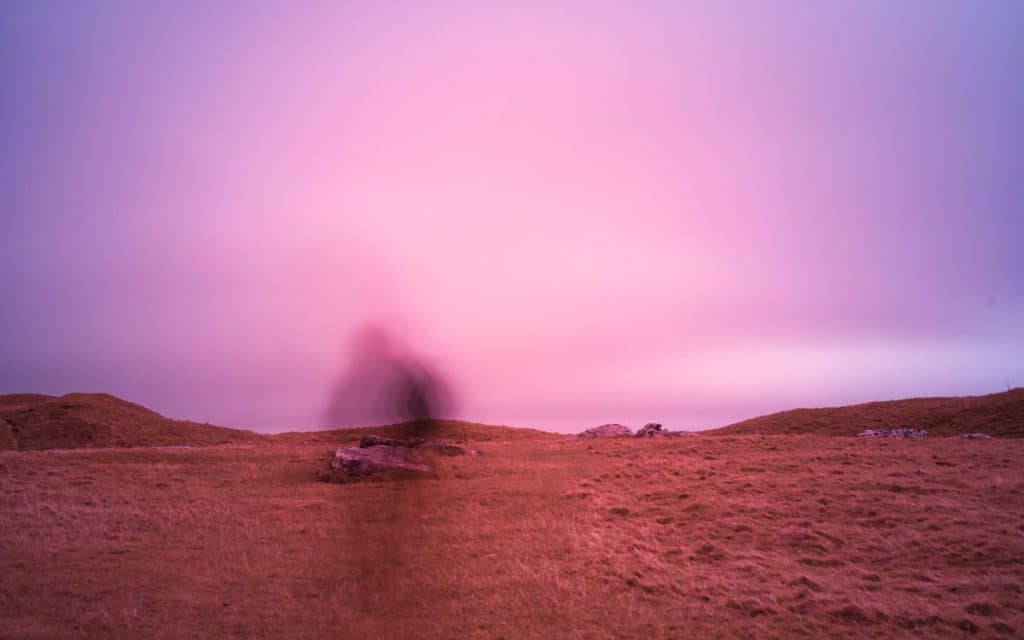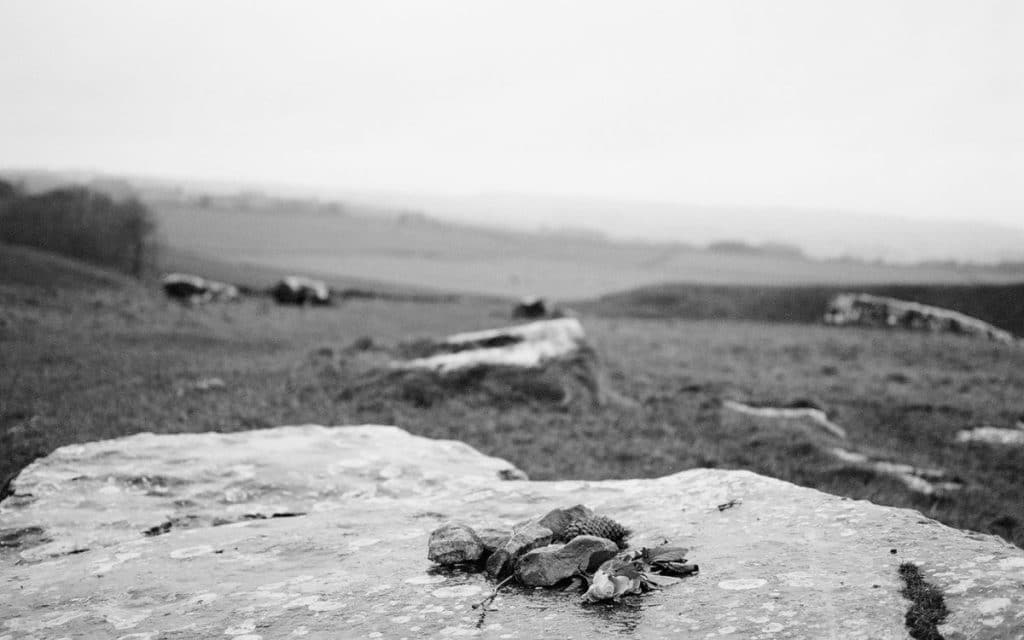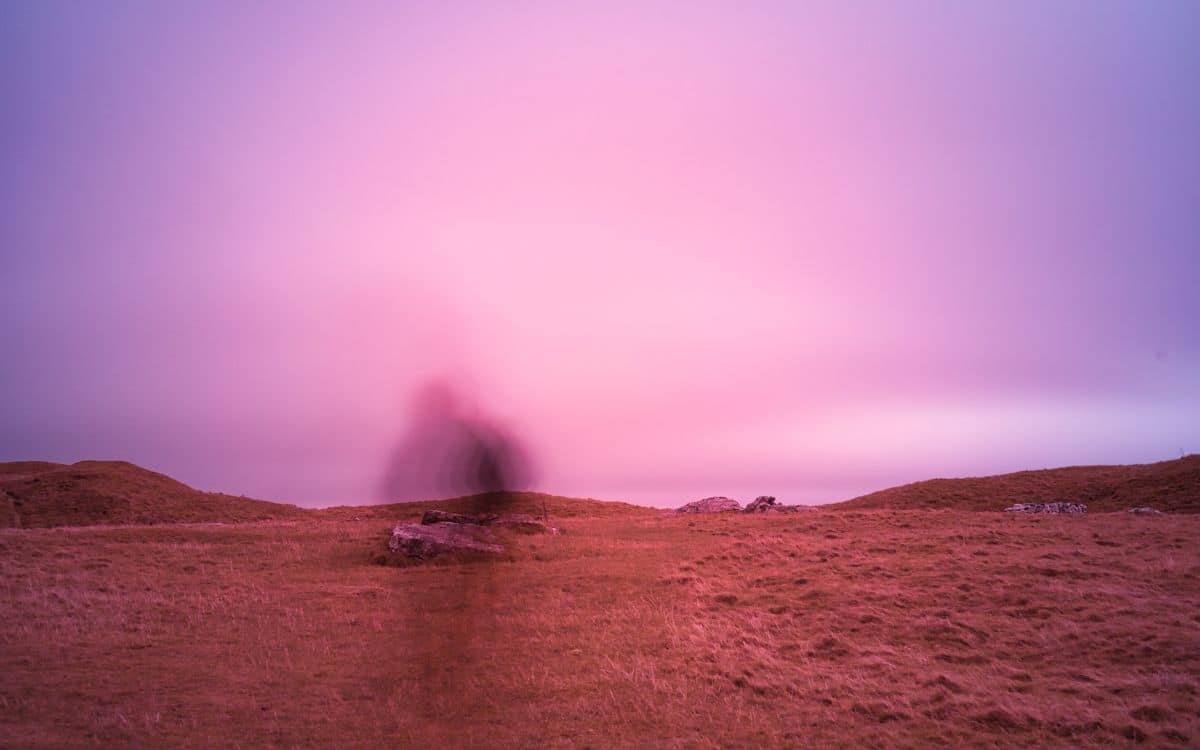Arbor Low in the Peak District is one of Britain’s most atmospheric and mysterious stone circles, writes LEE D MUNRO
Sat atop a usually windswept hill in the Peak District lies what is regarded as one of the most important megalithic sites in the country – Arbor Low stone circle and Gib Hill barrow.
The site at Arbor Low consists of a henge (a circular earth bank which surrounds a circular ditch, which itself surrounds a circular plateau) and limestone blocks arranged in a rough circle on the plateau.
Now weather-beaten and recumbent, it is thought the stone circle was constructed after the original henge.
What is Arbor Low?
According to the Arbor Low and Gib Hill Conservation Plan (2008), the henge most likely dates to around 2500 BC, with the stone circle being erected between 2500–2000 BC.
Although there are around fifty limestone blocks within the circle, it is believed some of these are fragments of whole blocks, with estimates suggesting there were originally just over forty stones making the circle.
At the centre of the circular plateau lay further limestone blocks, forming a “cove”.
These were stone blocks or slabs forming a central focus, or enclosure, within a stone circle.
The purpose of this cove is not absolutely known, but it is thought likely to provide a defined area of focus for the ceremonial or ritual purpose of the location.
A few hundred metres south-west of Arbor Low stone circle is Gib Hill barrow (a prehistoric burial mound).
Gib Hill actually consists of two barrows: an original Neolithic long barrow constructed 4000–3000 BC, and a Bronze Age round barrow constructed around 2000 BC.
As with Arbor Low henge and stone circle, Gib Hill is regarded as one of the best and untouched examples of its type.
Evidence of worked flint and chert suggests a continued human presence in the area dating back to at least 7000 BC.

Clearly, the construction of the barrows, henge and stone circle suggest the location had significance to those living there.
And aside from the obvious stone circle, evidence of at least burial ritual has been found at the location – in the form of human remains.
A cist was excavated at Gib Hill.
A cist is a buried stone-lined construction in which to lay the bodies of the dead.
Further at the Gib Hill site, material was found which was interpreted as containing cremated human bone.
At the Arbor Low site, it was discovered a barrow had been constructed in the south-east area of the henge which also contained a cist.
Human skeleton discovered next to stones
During excavations in 1901 and 1902, a human skeleton was discovered just next to the cove stones, and a separate dig revealed a human forearm bone in an area not far away.
The exact rituals, religious or otherwise, that took place here may be lost to time, or at the very best guessed at.

However, the human spiritual significance or connection to the place continues to modern times.
From 19th-century Christian open-air prayer meetings, a modern Sikh wedding, Druid or otherwise inspired gatherings at solstices and equinoxes, handfasting ceremonies, the spreading of loved ones’ ashes, to people seeking solace and connection to nature or something higher than oneself.
Given the ancient history, the burial and religious ceremonies likely conducted, the spiritual connections or expectations at stone circle sites generally, and Arbor Low specifically, one might expect tales of spook or supernatural to surface?
And one might be correct.
UFO groups have used the location to sky-watch.
Visitors with dowsing rods can be met there.
Most stone circles have associated folk tales, maybe involving the fae or ghosts.
In the case of Arbor Low, the otherworldly inhabitant is said to be a Boggart – perhaps a spiritual guardian to ward off nighttime visitors?
Aside from the prehistoric constructions, Arbor Low is also a well-known location regarding ley lines.
The contemporaneous meaning of ley lines differs from the original proposal.

Today they are proposed as “energy lines” or used by UFOs for navigation, or as some kind of haunted avenues.
However, the originator of the idea, Alfred Watkins, proposed in the early 1920s that significant prehistoric and ancient sites appeared connected along lines on a map.
His theory suggested these may be trade routes or ancient tracks.
In the 1960s, a fella named Tony Wedd took Watkins’ theory and ran with it.
And ran left field. Very left field!
He suggested these ley lines were used by UFOs for navigation and thus grew the perception of ley lines we have today.
Whatever the truth (or otherwise) of Watkins’ ley line theories (or Wedd’s!), viewing maps of these lines shows Arbor Low as a major hub – it is indeed Ley Line Grand Central, with some suggesting up to fifty lines cross at the location.
Arbor Low certainly has an ambience about it.
Set on a hill, ancient, panoramic views, windswept and weathered, secluded (the adjacent farm the only house for miles) – it is certainly an atmospheric location, especially when under moody skies.
So, if you’re in the Peak District, do pay it a visit.
Just remember not to disturb the Boggart!
Have you experienced the atmosphere at Arbor Low? Tell us your thoughts in the comments below!
LEE D. MUNRO, a native of North East England, now lives in the Staffordshire Moorlands. Lee has a long time and deep interest in investigating, researching and writing about anomalous experiences and phenomena, and locations associated with folklore, legend and the paranormal. Follow Lee at www.leedmunro.com.
You can read his previous articles on Spooky Isles.



